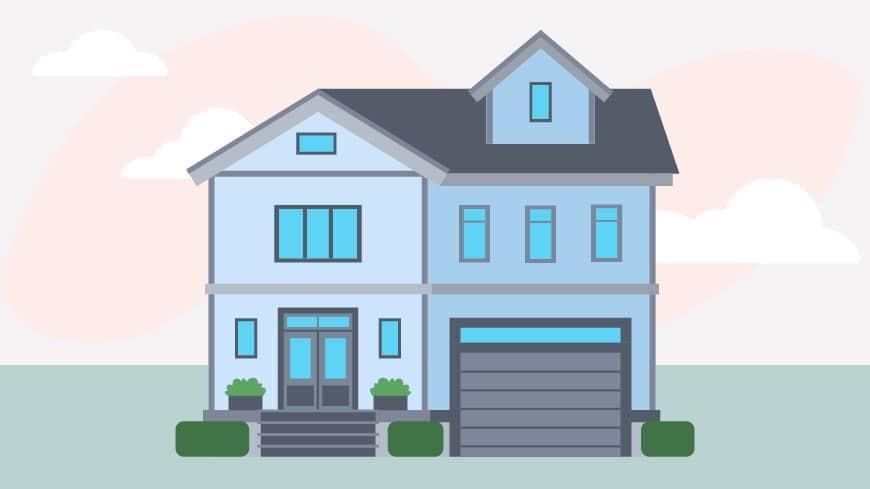What is high-interest debt and how to lower it

Debt isn’t always bad, but when it comes with high interest and steep monthly minimums, it should be approached with caution.
Given the high payment requirements, getting a savings account off the ground might be hard if you’re dealing with high-interest debt, and the changing monthly minimums can make it impossible to set a budget. Without knowing the risks involved, many borrowers are left to wonder how their high-interest debt could ever be lowered.
What is a high interest rate?
Lenders, just like any business, need to profit from the products they offer. When those products are loans and mortgages, creditors gain revenue from the difference between their cost of funds and the interest rate charged. No matter what type of loan you apply for, they’ll always come with an interest rate.
The amount of interest you end up paying depends on a number of factors. In addition to your credit score and personal financial history, interest rates are subject to changing economic factors, different financing options and the institution that issues the loan.
A 30-year fixed rate mortgage, for example, came with an average interest rate of 2.99% in May 2021. If you began the mortgage process with average credit, your lender might add a few extra decimal points of interest to make up for any perceived risk. On the other hand, if you applied for a home loan with excellent credit and a sizable down payment, your lender might agree to an interest rate below the market average.
What is good debt?
Any loan that increases your net worth or could boost your income in the long term is considered “good debt.” While too much of any kind of debt can be trouble, good debt is usually thought of as an investment in the future that comes with a relatively low interest rate.
Student loans and mortgages are some of the most common examples of good debt, since they both serve to expand your wealth and human capital. Taking out a personal loan for a home renovation, which in turn increases the value of your home, could also be regarded as an acceptable form of debt.
What is bad debt?
Debt is usually considered “bad” when the loan is used to purchase a depreciating asset, meaning the purchase won’t increase in value or generate income. Bad debt can take on many forms, but there are a few common examples everyone should work to avoid:
- Unpaid bills
- Personal & payday loans
- High-interest credit cards
Unpaid bills
Sometimes good debt can turn bad, like when monthly minimums go unpaid or the principal increases beyond a reasonable amount. Mortgages, for example, require regularly scheduled payments in order to build equity and make the investment worthwhile. By missing those payments, interest and late fees can quickly stack up and go beyond your ability to pay.
Personal & payday loans
Some borrowers might decide to take on debt to purchase something unnecessary. Personal loans can be used for expenses like vacations or luxury items, but are usually taken out to pay for something that can expand wealth in the long run.
Payday loans are another financing structure that can quickly overwhelm borrowers with unaffordable interest requirements. Interest rates on payday loans can reach as high as 300%, an exorbitant amount of interest for anyone to take on.
Unlike conventional financing which is paid off in installments, payday loans are dolled out in small amounts with short-term repayment plans, usually requiring the borrower to settle the debt with their next paycheck.
High-interest credit cards
Similarly, credit cards can be considered “good debt” as long as the minimum payments are made on time. Opting for a high-interest credit card isn’t automatic bad debt, but missed payments on this type of financing can quickly escalate and leave you in financial trouble. Any line of credit that comes with an interest greater than 20% is generally seen as high-interest and will weigh heavily on your monthly bills.

How to lower high-interest debt
When you’re paying off high-interest debt, you’ll quickly realize only a fraction of what you pay goes toward bringing down the principal. By only paying the minimums each month, the amount of interest compounds, significantly hampering your ability to save money or budget your expenses.
If you find yourself struggling with debt, it’s not the end of the world. There are a number of steps you can take to chip away at what you owe and stabilize your finances in the long term.
- Request a lower interest rate
- Consolidate with a personal loan
- Pay off smaller debts first
Request a lower interest rate
If you’ve been able to meet your minimum requirements with each round of bills, your creditor may be more willing to agree on a reduced interest rate. A good credit score will also go a long way toward reducing the amount you’ll owe.
You can also research other lenders with competitive rates. If your lender won’t agree to less interest, you might be able to transfer your balance to a new credit card. Your current lender might be more willing to agree to a reduction if other creditors are vying for your debt balance.
Consolidate with a personal loan
Debt consolidation is a step taken by borrowers with a number of disparate payments that might have varying interest rates. Spreading your debt out across different accounts like this could take years to pay off, accruing interest through the life of the loan and putting you even further behind full amortization.
Personal loans can be taken out to consolidate these debts under one single payment plan. These are typically structured with a fixed rate, meaning the interest rate stays the same from month to month. If you’ve been juggling credit card payments, debt consolidation presents a more organized alternative. With those payments folded into a fixed rate loan, your monthly dues will be much more manageable.
Pay off smaller debts first
When paying off high-interest debt, most of your money will be going toward interest payments, making it seem impossible to lower the principal and make progress on what you owe.
Some borrowers choose to pay off their smaller debts first as a way of clearing the cobwebs and getting rid of the easy debts right away. This is known as the “snowball method” of debt repayment, and involves putting as much extra money as you can toward the account with the smallest remaining balance. Once that small amount is paid off, you can use the money that was going toward that debt and transfer it over to the next smallest balance.
As a popular debt payment strategy, the snowball method provides a series of small successes at the start of your efforts, making your larger balances appear much more manageable.
In conclusion
While there are strategies to lower high-interest debt, the best approach is avoiding this type of credit to begin with. While some forms of debt can help you build credit over time, overuse of financial resources and poor planning can have the opposite effect.
Working to lower the amount of debt on your plate, grants you with financial flexibility and more financial opportunities, like personal loans or buying a home.




